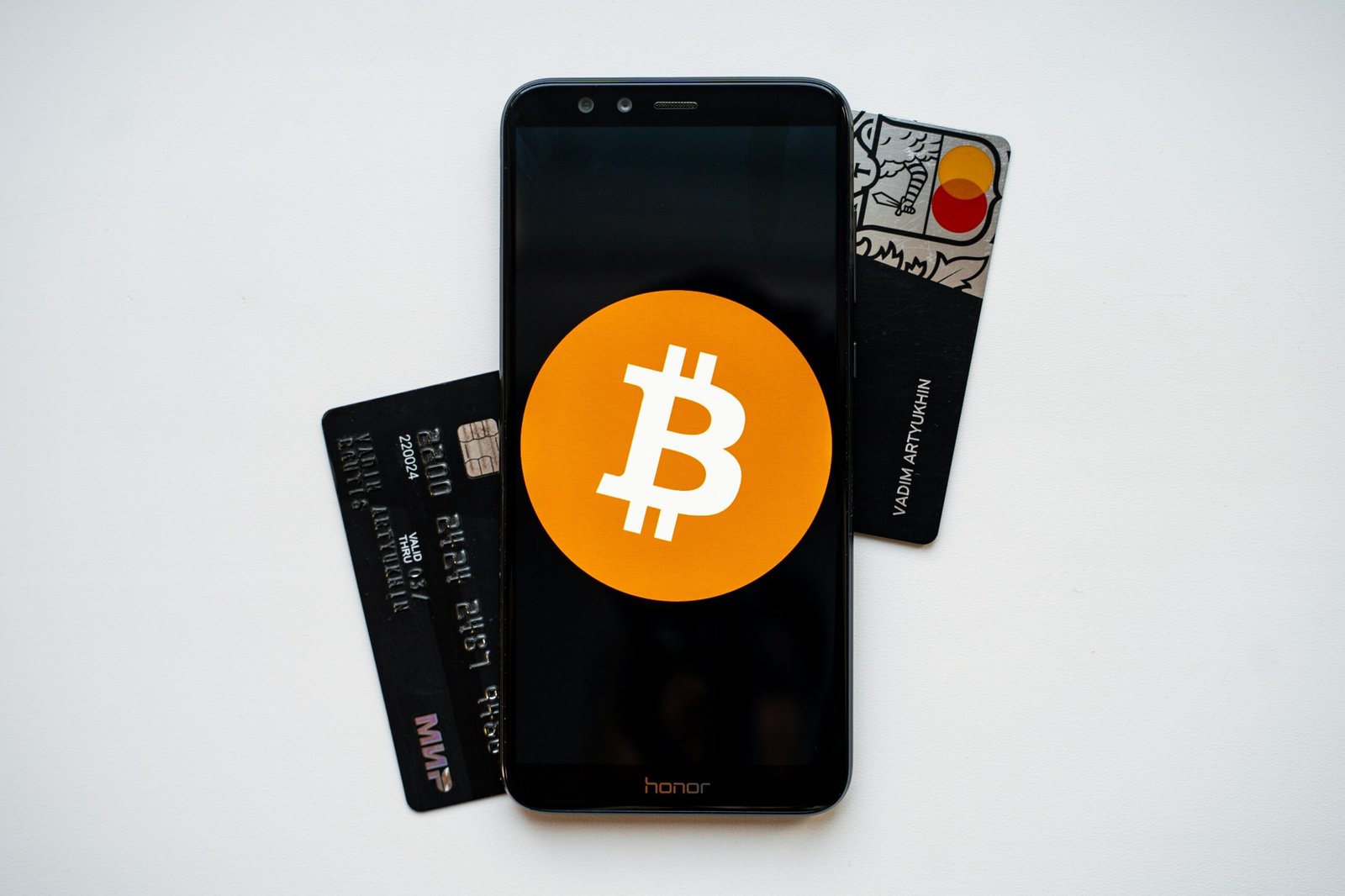Introduction to Blockchain Technology
Blockchain technology, often associated with cryptocurrencies like Bitcoin, represents a groundbreaking innovation in the realm of digital transactions. At its core, blockchain is a type of distributed ledger technology (DLT) that records transactions across multiple computers in a manner that ensures the integrity and security of the data. This decentralized approach eliminates the need for a central authority, making the system more resilient to tampering and fraud.
The fundamental principles that underpin blockchain technology are decentralization, immutability, and transparency. Decentralization refers to the distribution of data across a network of computers (nodes), each holding a copy of the ledger. This ensures that no single entity has control over the entire database, reducing the risk of centralized points of failure. Immutability means that once data has been recorded on the blockchain, it cannot be altered or deleted. Every transaction is timestamped and linked to the previous one, forming a chain of blocks that is secure and tamper-proof. Transparency is achieved by making the ledger publicly accessible, allowing anyone to verify the authenticity of transactions.
The concept of blockchain gained prominence with the advent of Bitcoin in 2009, introduced by an unknown person or group of people using the pseudonym Satoshi Nakamoto. Bitcoin was designed as a decentralized digital currency, and its underlying blockchain technology ensured secure and transparent transactions without the need for intermediaries like banks. This innovation sparked widespread interest and led to the exploration of blockchain’s potential beyond cryptocurrencies.
As we delve deeper into the diverse applications of distributed ledger technology, it becomes evident that blockchain’s impact extends far beyond Bitcoin. From supply chain management to healthcare, blockchain is poised to revolutionize various industries by enhancing security, efficiency, and transparency. This exploration will uncover the multifaceted uses of blockchain, showcasing its transformative potential in the digital age.
Blockchain in Supply Chain Management
Blockchain technology, initially known for its role in cryptocurrency transactions, has found a substantial application in supply chain management. Companies are leveraging blockchain to enhance transparency, traceability, and overall efficiency within their supply chains. This distributed ledger technology allows for the recording of every transaction in a secure and immutable manner, which is particularly advantageous in tracking products from their origin to the consumer.
One notable example is Walmart’s implementation of blockchain to monitor its leafy green supply chain. By using blockchain, Walmart can trace the origin of its products in seconds rather than days, significantly reducing the risk of contaminated products reaching consumers. Similarly, IBM’s Food Trust blockchain network is being adopted by various food suppliers and retailers to ensure the authenticity and safety of their food products. This transparency not only helps in identifying the source of any contamination swiftly but also builds consumer trust through verifiable data.
Beyond food, blockchain is also making strides in the fashion industry. Companies like Provenance and Everledger are using blockchain to provide proof of authenticity and ethical sourcing of materials. This helps in reducing fraud and ensuring that products are not counterfeit. By recording every stage of the product lifecycle on the blockchain, companies can offer consumers a transparent view of their products’ journey, from raw material sourcing to the final product.
The benefits of blockchain in supply chain management are numerous. Enhanced transparency reduces the risk of fraud and errors, while traceability ensures that any issues can be quickly identified and rectified. Additionally, the efficiency brought by blockchain can lead to cost savings and faster delivery times. However, implementing blockchain is not without its challenges. The technology requires significant investment in infrastructure and a willingness to change existing processes. Interoperability between different blockchain systems and the need for industry-wide standards are also critical hurdles that need to be addressed.
Despite these challenges, the potential of blockchain to revolutionize supply chain management is immense. As more companies adopt this technology, the benefits of increased transparency, traceability, and efficiency will become even more apparent, paving the way for a more secure and reliable global supply chain.
Blockchain in Healthcare
Blockchain technology, often synonymous with the financial sector, has found transformative applications within the healthcare industry. One of the most critical uses of blockchain in healthcare is securing patient data. The immutable and decentralized nature of blockchain ensures that patient records are protected from unauthorized access and tampering. By leveraging cryptographic techniques, blockchain guarantees that patient information remains confidential and accessible only to authorized personnel, thereby enhancing data security and privacy.
In addition to securing patient data, blockchain facilitates streamlined medical record-keeping. Traditional methods of maintaining medical records are often fragmented and prone to errors, leading to inefficiencies in patient care. Blockchain technology enables the creation of a unified and comprehensive patient history. Each transaction or update on the patient’s record is timestamped and stored in a distributed ledger, ensuring real-time access and traceability. This seamless integration of patient records across different healthcare providers enhances continuity of care and reduces administrative burdens.
Data integrity is another vital aspect addressed by blockchain in healthcare. The decentralized nature of blockchain ensures that data is consistently verified and validated by multiple nodes in the network. This consensus mechanism prevents data manipulation and guarantees the authenticity of the information stored. For instance, in clinical trials, blockchain can be used to securely record and track trial results, ensuring that the data remains unaltered and trustworthy. This transparency enhances the reliability of clinical research and fosters greater trust among stakeholders.
Several blockchain-based healthcare initiatives exemplify these benefits. Patient consent management systems, built on blockchain, provide a transparent and tamper-proof record of patient consents for various treatments and data-sharing activities. Drug traceability solutions leverage blockchain to monitor the pharmaceutical supply chain, ensuring that medications are authentic and have not been tampered with. These applications highlight the potential of blockchain to revolutionize healthcare by enhancing data security, integrity, and operational efficiency.
Blockchain in Finance Beyond Cryptocurrencies
Blockchain technology has far-reaching implications in the financial sector that extend well beyond the realm of cryptocurrencies like Bitcoin. One of the most significant applications of blockchain in finance is in the area of cross-border payments. Traditionally, international money transfers have been plagued by high fees, lengthy processing times, and a lack of transparency. Blockchain can streamline these processes by providing a decentralized ledger that records transactions in real-time, reducing the need for intermediaries and thereby cutting costs and increasing transaction speed.
Another critical application of blockchain technology in finance is the utilization of smart contracts. These are self-executing contracts with the terms of the agreement directly written into code. Smart contracts automatically enforce and execute the terms of an agreement when predefined conditions are met, eliminating the need for intermediaries and reducing the risk of fraud. This innovation promises to revolutionize various financial services, including loan issuance, insurance claims processing, and securities trading.
Decentralized Finance (DeFi) represents a growing movement that leverages blockchain technology to create a more open, transparent, and accessible financial system. DeFi platforms enable users to engage in financial activities such as lending, borrowing, and trading without relying on traditional financial institutions. These platforms operate on decentralized networks, providing users with greater control over their assets and reducing the risk of centralized points of failure.
Blockchain is also transforming traditional banking and financial services by offering enhanced security and efficiency. The immutable nature of blockchain records ensures that once a transaction is recorded, it cannot be altered, providing a high level of security against fraud and tampering. Additionally, the decentralized nature of blockchain reduces the reliance on central authorities, thereby improving the efficiency and resilience of financial systems. Financial institutions are increasingly adopting blockchain for tasks such as customer identity verification, transaction reconciliation, and audit trails, which streamline operations and reduce compliance costs.
In summary, the diverse applications of blockchain technology in finance are paving the way for a more secure, efficient, and inclusive financial ecosystem. From cross-border payments and smart contracts to decentralized finance, these innovations are reshaping the financial landscape and offering new opportunities for growth and development.
Blockchain in Voting and Governance
Blockchain technology holds significant promise in transforming voting and governance systems, offering a secure, transparent, and tamper-proof mechanism for electoral processes. By leveraging the decentralized nature of blockchain, voting systems can become more reliable and trustworthy, addressing long-standing issues such as voter fraud, tampering, and lack of transparency.
One of the primary advantages of blockchain in voting is its ability to ensure data integrity. Once a vote is cast and recorded on the blockchain, it cannot be altered or deleted, making it virtually impossible to manipulate results. This immutability fosters trust among voters, knowing that their votes are accurately counted and reported. Additionally, blockchain’s transparency allows for real-time auditing, enabling election authorities and independent observers to verify the legitimacy of the voting process.
Several countries and organizations have already begun experimenting with blockchain-based voting systems. For instance, Estonia has been a pioneer in digital governance, implementing blockchain technology in its i-Voting system since 2005. This system allows citizens to vote online securely and transparently, with the blockchain ensuring the integrity of the votes. Similarly, in 2018, Sierra Leone piloted a blockchain-based voting system during its presidential elections, aiming to enhance transparency and reduce electoral fraud.
Another notable example is the use of blockchain in organizational governance. The global cooperative organization, Aragon, utilizes blockchain to facilitate decentralized decision-making processes. Members can vote on proposals and changes to the organization’s structure, with the blockchain ensuring transparency and accountability in every decision made.
Despite its potential, the implementation of blockchain in voting systems is not without challenges. Technical issues, such as ensuring voter anonymity while maintaining transparency, need to be addressed. Additionally, widespread adoption requires significant investment in infrastructure and robust cybersecurity measures to protect against potential threats.
Overall, blockchain technology offers a promising solution for enhancing the security, transparency, and trustworthiness of voting and governance systems. As more countries and organizations explore its potential, blockchain could play a pivotal role in shaping the future of democratic processes worldwide.
Blockchain in Intellectual Property and Digital Rights Management
Blockchain technology offers a transformative approach to protecting intellectual property (IP) and managing digital rights. By leveraging the decentralized and immutable nature of distributed ledgers, blockchain ensures the authenticity and ownership of digital assets, providing a robust mechanism for copyright protection and royalty distribution.
One of the primary advantages of using blockchain in IP management is its ability to create a transparent and tamper-proof record of digital asset ownership. When an artist, musician, or software developer registers their work on a blockchain, a unique digital fingerprint (hash) is generated, establishing a verifiable record of creation and ownership. This immutable record can be utilized to resolve disputes over the originality and ownership of digital content, offering a clear and reliable source of truth.
Furthermore, blockchain facilitates efficient digital rights management (DRM) by automating the process of licensing and royalty payments through smart contracts. These self-executing contracts can be programmed to distribute royalties automatically to creators and stakeholders whenever their work is accessed or purchased. This not only ensures fair compensation but also reduces administrative overhead and the potential for human error.
Several platforms and businesses have already begun to harness the power of blockchain for IP protection and DRM. For example, platforms like Ujo Music and Mycelia enable musicians to register their compositions on a blockchain, ensuring transparent royalty distribution and direct engagement with their audience. Similarly, companies like Verisart use blockchain to certify the authenticity and provenance of artworks, providing artists and collectors with a secure method to verify ownership and track the history of their pieces.
By integrating blockchain into IP management and DRM, creators, consumers, and intermediaries can benefit from enhanced security, transparency, and efficiency. As the technology continues to evolve, its applications in these fields are likely to expand, offering innovative solutions to longstanding challenges in the creative industries.
Blockchain in Real Estate
Blockchain technology is revolutionizing the real estate industry, offering a myriad of benefits that streamline property transactions, reduce fraud, and enhance transparency in ownership records. By implementing distributed ledger technology, the real estate sector can address several long-standing inefficiencies and limitations.
One of the primary advantages of blockchain in real estate is the ability to streamline property transactions. Traditional methods often involve multiple intermediaries, extensive paperwork, and prolonged timelines. Blockchain, however, enables the creation of smart contracts that automatically execute when predefined conditions are met. This reduces the need for intermediaries, minimizes the risk of human error, and accelerates the transaction process. As a result, buyers and sellers can experience more seamless and expedited transactions.
Fraud reduction is another significant benefit of blockchain technology in real estate. Property fraud, including title fraud and fraudulent property listings, has been a persistent challenge. Blockchain’s immutable and transparent nature ensures that once information is recorded, it cannot be altered or tampered with. This creates a secure and verifiable chain of ownership, making it exceedingly difficult for fraudulent activities to occur. Buyers and sellers can have greater confidence in the authenticity of property ownership records.
Moreover, blockchain enhances transparency in property ownership records. Traditional record-keeping systems can be opaque and susceptible to errors or manipulation. Blockchain’s distributed ledger allows all parties involved to access a single, immutable version of the truth. This transparency facilitates easier verification of property details and ownership history, benefiting both buyers and regulatory authorities.
Several blockchain-based real estate platforms exemplify these advantages. For instance, Propy and Ubitquity utilize blockchain to offer secure, efficient property transactions and record-keeping. These platforms not only reduce transaction costs by eliminating intermediaries but also increase efficiency by automating processes and ensuring data integrity.
In conclusion, blockchain technology holds immense potential to transform the real estate industry by streamlining transactions, reducing fraud, and improving transparency. As more platforms adopt this technology, the industry will likely see further enhancements in efficiency and trust, ultimately benefiting all stakeholders involved.
Challenges and Future of Blockchain Technology
Blockchain technology, despite its transformative potential, faces several significant challenges that impede its widespread adoption. Scalability remains a primary concern. Current blockchain networks, particularly those using proof-of-work consensus mechanisms, struggle to handle a high volume of transactions efficiently. This bottleneck limits their utility in applications requiring rapid transaction processing, such as financial services and global supply chains.
Regulatory issues present another formidable barrier. The decentralized and often anonymous nature of blockchain transactions complicates regulatory oversight and raises concerns related to money laundering, fraud, and compliance with international laws. Governments and regulatory bodies are still grappling with how to effectively regulate this evolving technology without stifling innovation.
Energy consumption is a crucial issue tied to many blockchain systems, particularly those that rely on energy-intensive proof-of-work protocols. The environmental impact of maintaining and securing these networks is substantial, leading to a push for more sustainable alternatives.
Looking ahead, several trends and advancements hold promise for overcoming these challenges. Interoperability between different blockchain networks is a growing area of focus. Facilitating seamless interaction between disparate blockchains could enhance the functionality and adoption of the technology across various sectors. Improvements in consensus mechanisms are also on the horizon. Alternatives like proof-of-stake and delegated proof-of-stake aim to reduce energy consumption and increase transaction speeds while maintaining security.
Emerging use cases continue to demonstrate the versatile potential of blockchain. From decentralized finance (DeFi) platforms to supply chain traceability and secure voting systems, the applications are expanding. These innovations highlight blockchain’s potential to transform industries by providing transparent, secure, and efficient solutions.
As blockchain technology evolves, it may significantly impact various industries by enhancing transparency, security, and efficiency. The ongoing efforts to address scalability, regulatory, and environmental challenges will be crucial in determining the trajectory of blockchain’s development and its long-term viability. The future of distributed ledger technology is poised to be dynamic and far-reaching, with the potential to reshape how we interact with digital ecosystems.


